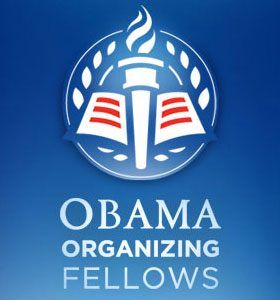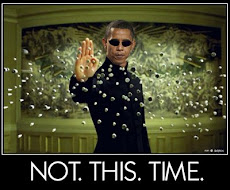Saturday, March 31, 2018
Wednesday, March 28, 2018
Sunday, March 25, 2018
Rev. Dr. William Barber: ‘Nothing Would Be More Tragic
Rev. Dr. William Barber: ‘Nothing Would Be More Tragic Than For Us To Turn Back Now’
Rev. Dr. William J. Barber II, President of Repairers of the Breach and a recipient of the 2018 North Star Award delivered a rousing acceptance speech during this year’s National CARES Mentoring Movement Gala.
During his remarks, Rev. Barber told Black America, “My brothers and sisters we are a people that have come from worst than what we see now and nothing would be more tragic than for us to turn back now.”
“Don’t you ever let it come out of your mouth that we’ve never seen anything this bad; that we’ve never seen racism in the White House.” Barber continued, “Don’t you even dare let your children hear you utter that because we came through 250 years of slavery and 100 years of legalized Jim Crow — nothing would be more tragic than for us to turn back now.”
Rev. Barber diagnosed what the world is witnessing in the White House and Congress a s a “moral malady.”
“We’re going backwards rather than forwards,” Rev. Barber said. “The Voting Rights Act has been gutted. 52 years later we have less voting rights than we had August 6th 1965."
In addressing poverty in America, the President of the Repairers of the Breach said, “There are over 140 million people [that are] poor and working poor in this country. The majority of them are white, not Black. The majority of them are women and children.”
In closing, Barber announced a 40-day build up to an initiative called the "Souls of Poor Folks" that will confront lawmakers and "reset the moral narrative."
Sunday, March 18, 2018
Reverend Dr. William Barber Delivers Masterful History Lesson
Reverend Dr. William Barber - Delivers Masterful History Lesson, Declares 'It's Movement Time Again'
Roland S. Martin
Published on Feb 8, 2018
Rev. William Barber delivered the benediction at the close of #RolandMartinUnfiltered Presents: The State Of Our Union.
During his closing remarks, Rev. Barber addressed our current political climate, the lack of morality in it, the existence racial animus and the browning of America.
Barber offered a masterful history lesson dissecting the reconstruction period, civil rights era and our not so distant past.
The President of Repairers of the Breach chastised those in America whose intent is to reverse the progress African Americans, women and progressives have made over the course of the last 100 years.
Barber began his commentary reading a passage from Ezekiel 22, out of what he called the “Millennial version” of the Bible.
Barber began with the premise that God was angry because priests were “desecrating” his holy things. He continued, “Your politicians have become like wolves — prowling and killing and taking whatever they want.”
“And your preachers are covering up for the politicians by pretending to have received visions and revelations; they say this is what God says and I God have not said a thing.”
“And because your politicians are like wolves, and your preachers are covering up for your politicians; extortion is rife; robbery is epidemic; the poor and the needy are being abused; and the immigrants and the strangers are being kicked around at will with no access to justice.”
-
NOW AVAILABLE: "Shelly, Go To My iPad" / #BringTheFunk tees - http://ow.ly/dlBA30hm1Ra
We have some amazing things coming your way in 2018 and beyond. Sign up for the Roland Martin Mailing List http://ow.ly/2Yvq30hnc87
Listen, download and subscribe to the ALL NEW Roland Martin Unfiltered Audio Podcast on iTunes http://ow.ly/Hctl30eeN19
Visit Roland Martin's NEW digital lifestyle and information website http://AllThat.tv
Hit the thumbs up button and subscribe to the channel to see more content like this. http://bit.ly/2ubQ9NV
Follow Roland Martin on the following social media platforms:
Facebook: http://bit.ly/2dgI2GO
Twitter: http://bit.ly/2dgFOra
Instagram: http://bit.ly/2d48Acu
For more info about Roland visit http://www.rolandsmartin.com
Roland Martin Podcast on iTunes: http://apple.co/2iado2r
Thursday, March 8, 2018
Mother Mary Elizabeth Lange
Mother Mary Elizabeth Lange
Elizabeth Clarisse Lange was born in 1784 in Haiti or Santiago de Cuba. Her parents fled Haiti during the revolution and went to Cuba, where Lange received her education. She arrived first in Charleston, South Carolina, then traveled to Norfolk, Virginia, and finally settled in Baltimore, Maryland, She came to Baltimore in 1813 and settled in Fells Point. Baltimore had a large population of French-speaking Caribbean Catholics. Lange, a well-educated free black woman in a slave-holding state, also had money from her merchant father. She saw a need in educating children of Caribbean immigrants and slaves, a practice which was illegal at that time.
Lange used her money and set up a school in her home with her friend, Marie Magdaleine Balas. They offered a free education, but after 10 years finances became a problem. Rev. James Hector Joubert, a Sulpician with the backing of the Archbishop of Baltimore Monsignor James Whitfield, came to the rescue. Joubert presented Lange with a challenge to found a religious congregation for the education of black children. Joubert would provide direction, solicit financial assistance and encourage other women of color to become members of the first order of African-American nuns in the history of the Catholic Church.
On July 2, 1829, Lange and three other women (Rosanne Boegue, Marie Balas, and an older student, Almaide Duchemin) took their first vows. Lange took the name of "Sister Mary" and became the first superior general of the new community. The sisters adopted a religious habit of a black dress and cape, with a white cap. They started in a rented house with four sisters and twenty students. The school later became known as St. Frances Academy, and is still in operation today in Baltimore. While experiencing poverty, racism, and untold hardships, the Oblate Sisters sought to evangelize the Black community through Catholic education. The Oblate sisters educated youths and provided homes for orphans. They nursed the sick and dying and sheltered the elderly. In addition to schools, the sisters later conducted night classes for women, vocational and career training, and established homes for widows.
Mother Mary's early life prepared her well for the turbulence that followed the death of Father Joubert in 1843. There was a sense of abandonment at the dwindling number of pupils and defections of her closest companions and co-workers. Yet through it all Mother Lange never lost faith in Providence. Mother Mary Lange practiced faith to an extraordinary degree. In fact, it was her deep faith which enabled her to persevere against all odds. To her black brothers and sisters she gave herself and her material possessions until she was empty of all but Jesus, whom she shared generously with all by witnessing to His teaching. In close union with Him, she lived through disappointment and opposition until God called her home, February 3, 1882 at Saint Frances Convent in Baltimore, Maryland.
Information sorces:
Wikipedia, the free encyclopedia
baltimoresun.com/features/black-history-month/bal-blackhistory-lange-story.html
motherlange.org/index.html
oblatesisters.com/MotherLange.html
Mother Lange Video, educational Version
Mother Mary Lange May Become The First African-American Saint
Black Nuns and "Subversive Habits"
Currents anchor Liz Faublas speaks with Dr. Shannen Dee Williams, a professor at the University of Tennessee, who is completing the manuscript for a book about Black Catholic Religious Sisters in the United States titled "“Subversive Habits: Black Nuns and the Struggle to Desegregate Catholic America after World War I.”
Thursday, March 1, 2018
Frankie Manning
Frankie Manning contributed more to the Lindy Hop than any other person,as a dancer, innovator and choreographer. For much of his lifetime he was an unofficial Ambassador of Lindy Hop. Originally touring as a dancer and choreographer with Whitey's Lindy Hoppers in the 30's and 40's, he helped spread the popularity of the Lindy Hop through three continents. Once again, since the swing dance revival that started in the 1980s, Frank Manning was a driving force worldwide with his teaching, choreography and performance. His own love of swing music and dancing was contagious as his dazzling smile.
In 1935, a dancer named Frankie Manning won a dance competition with a daring feat: He flipped his partner over his back and onto her feet, the Lindy Hop “air step” that would make Manning, arguably the most famous swing dancer of all time.
His career included both a first act and a later revival, bookending a 30-year job and a quiet life at the post office. He started dancing in his teens, and he was still dancing at his 85th birthday party, when he danced with 85 different partners.
Manning was born May 26, 1914 in Jacksonville, Florida. After his parents separated, at the age of 3 he moved to Harlem with his mother, who was a dancer.
Manning began dancing as a child. Manning's mother sent him to spend summers with his father, aunt and grandmother on their farm in Aiken, South Carolina. On Saturdays, farmhands and locals would come to the farm to play music on the front porch with harmonicas and a washtub bass. Manning's grandmother encouraged the bashful boy to get out in the yard and dance with the others. Once he got in the dance circle, he developed a feel for dancing and did not want to stop.
Back in New York, he started attending the dances at the Renaissance Ballroom in 1927 after his mother invited him to help her decorate the ballroom for a Halloween dance and promised to take him to the 9:00 dance that night.Watching from the balcony, he was surprised to see his mother dancing formal ballroom styles such as foxtrot and waltz, having only seen her dance before in a much looser and casual style at neighborhood rent parties. He danced with his mother later that night and she told him afterwards that "Frankie, you'll never be a dancer, because you're too stiff.
"Manning really loved his mother and wanted to do things to please her, so that is why he wanted to learn how to dance. He started listening to records on a Victrola in his bedroom and would practice dancing with a broom or a chair trying to get "un-stiff". When he was older, he started going to Harlem's Savoy Ballroom, which was for better dancers, and was also the only integrated ballroom in New York.
He frequented the Savoy in the 1930s, eventually becoming a dancer in the elite and prestigious "Kat's Corner," a corner of the dance floor where impromptu exhibitions and competitions took place. During a dance contest in 1935, Manning and his partner, Frieda Washington, performed the first aerial in a swing dance competition against George "Shorty" Snowden, the inventor of the term Lindy Hop, and his partner, Big Bea, at the Savoy Ballroom. The airstep he performed was a "back to back roll" and was danced while Chick Webb played "Down South Camp Meeting," which was Manning's request after having heard the song earlier in the evening. The airstep went flawlessly to the music and astonished the more than 2,000 audience members.
[If you're into 20s and 30s dancing, you've probably heard of the Lindy Hop. It popularised the Swing era and was a fusion of many dances, including jazz, tap, breakaway and Charleston.It was born in and important to the African-American communities in Harlem, but entered the mainstream in the 1930's.
The dance can be wild and spontaneous, with frenzied kicks and body movements, or it can be cool and sophisticated, and it is usually partnered. It can be fascinating and interesting to watch.]
Although he didn't come up with the name, Frankie Manning was known as the ambassador of the Lindy Hop because he helped make the dance popular.
He taught, performed and choreographed versions of the dance, introducing people to the fashionable moves all over America.
Frankie developed his own unique style of Lindy Hopping and is responsible for many innovations of the dance. This included dancing at a sharp angle to the ground like a track runner, instead of in the upright, stiff ballroom position of his predecessors.
In 1935, Herbert White organized the top Savoy Ballroom lindy hop dancers into a professional performance group that was eventually named Whitey's Lindy Hoppers. Manning created the troupe's first ensemble Lindy Hop routines and functioned as the group's de facto choreographer, although without that title. The troupe toured extensively and made several films. While with Whitey's, Manning also danced with Norma Miller, who became known as the Queen of Swing. Whitey's Lindy Hoppers disbanded around World War II when many of the male dancers entered the armed forces. Manning himself served in the U.S. Army.After the war, in 1947, Manning created a small performance group called the Congaroos. When the Congaroos disbanded in 1955, Manning quietly settled into a career with the United States Postal Service. Some 30 years later, Manning started his second career in dancing: travelling the world as a renowned instructor and inspirator.
In 1982, Al Minns, a former member of Whitey's Lindy Hoppers, started to teach Lindy Hop at the Sandra Cameron Dance Center, where he introduced a new generation of dancers to the Lindy Hop. Before he died in 1985, he told his students that Manning, another surviving member of Whitey's Lindy Hoppers, also lived in New York City.
In 1986, dancers Erin Stevens and Steven Mitchell contacted Manning and asked him to teach them the Lindy Hop. Manning at first declined, before finally agreeing to meet with them; he was skeptical that a much younger generation would really be interested in swing or Lindy. However, Mitchell and Stevens returned to California and helped to spread Lindy Hop to the West Coast and other areas of the U.S. Thus, the swing revival began. That same year, Lennart Westerlund contacted Manning and invited him to Sweden to work with The Rhythm Hot Shots. Manning traveled to Sweden in 1987 and returned there every year from 1989 onward to teach at the Herräng Dance Camp.
Manning died in Manhattan on April 27, 2009, aged 94.
Frankie Manning Foundation
The mission of the Frankie Manning Foundation is to carry on the work and the spirit of Frankie Manning in spreading the joy of Lindy Hop, danced to big band swing music, throughout the world. In accordance with Manning's own values, and those of the Savoy Ballroom where the Lindy Hop got its start, the fund seeks to promote projects which are grounded in unity and collaboration, and which enable people of all different backgrounds to participate in our joyous dance of Lindy Hop.
Information sorces:
telegraph.co.uk/technology/2016/05/25/who-was-frankie-manning-and-what-is-the-lindy-hop/
delectant.com/frankie-mannings-incredible-dancing-skills-made-famous-twice-50-years-apart/
frankiemanning.com
savoystyle.com/frankie_manning.html
frankiemanningfoundation.org
imdb.com/name/nm0543278/
temple.edu/tempress/titles/1877_reg.html
vox.com/2016/5/26/11776066/frankie-mannings-102nd-birthday
Frankie Manning Tribute Video
Lindy Hop - Hellzapoppin (1941)
Frankie Manning - Never Stop Swinging!
This video was released back in 2009 on the weekend the world Lindy Hop community was to come together and celebrate his 95th birthday. Frankie Manning brought Lindy Hop to so many people all over the world and was a part of so many lives, his legacy lives on in every person that is transformed into a dancer by way of Lindy Hop. He was truly a one of kind person and who's memory will never be forgotten.
Part 2 Frankie Manning's first Aerial
Frankie Manning's Funeral Services - Shim Sham led by Chazz Young - 2009-05-02
Subscribe to:
Posts (Atom)






















































